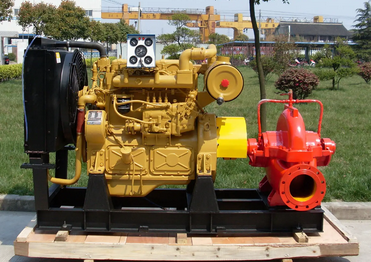Improving the operating efficiency of diesel engine water pump
Improving the operating efficiency of diesel engine water pumps is a comprehensive process involving optimization and improvement in multiple aspects. Here are some key promotion strategies:
1. Design and optimization of the water pump itself
Optimization of impeller and guide vanes:
Improve the surface finish of the impeller and guide vane flow channels, and reduce hydraulic loss and energy loss. This can be accomplished by grinding the surface of the runner using a tool such as a handheld grinding wheel.
New materials, such as plastic impellers, are used to reduce weight and reduce shaft power consumption. The weight of the optimally designed plastic impeller can be significantly reduced, thereby reducing the energy consumption of the water pump during operation.
Redesign the impeller hydraulic model to make it more consistent with the principles of fluid dynamics and improve the efficiency of water flow.
Seal improvements:
Efficient sealing technology, such as a double SiC structure water seal, is used to reduce the dynamic contact pressure on the sealing surface and control pressure fluctuations on the contact surface, thereby reducing leakage and energy consumption.
Lightweighting and structural optimization of components:
Lightweight design of each component of the water pump to reduce unnecessary weight and reduce inertia load during operation.
Optimize the structural layout of components to reduce hydraulic resistance and energy loss.
2. Optimization of operation and maintenance
Reasonable selection and configuration:
Reasonably select the model and specifications of the water pump according to actual needs to avoid wasting energy consumption caused by excessive excess flow and excess head.
Configure appropriate transmission devices, such as coupling transmission to improve transmission efficiency and reduce slippage and energy loss that may be caused by belt transmission.
Strengthen inspection and maintenance:
Regularly inspect and maintain the water pump, check the wear of key components such as sealing rings and bearings, and replace seriously worn components in a timely manner.
Keep the water pump clean and lubricated to reduce friction resistance and energy loss.
Adjustment and optimization of operating parameters:
Monitor the operating parameters of the water pump, such as current, flow, head, etc., to ensure that the water pump operates in the high-efficiency zone.
Adjust the working point of the water pump in a timely manner to avoid increased energy consumption caused by deviation from the optimal working point.
Use energy-saving technology:
Promote the use of frequency conversion technology to adjust the speed and flow of water pumps according to actual needs to avoid unnecessary waste of energy consumption.
Apply intelligent control systems to realize automated control and optimal dispatch of water pumps, improving operating efficiency and management levels.
3. Other auxiliary measures
Improve the operating environment:
Maintain good ventilation and heat dissipation in the water pump room to avoid the impact of high temperature environments on the performance of the water pump.
Reduce the air content in the pipeline and pump body to avoid the impact of air resistance on the water output.
Training and Education:
Strengthen the training and education of water pump operators to improve their professional skills and energy conservation awareness.
Operators are encouraged to actively participate in the energy-saving transformation and operation optimization of water pumps.





